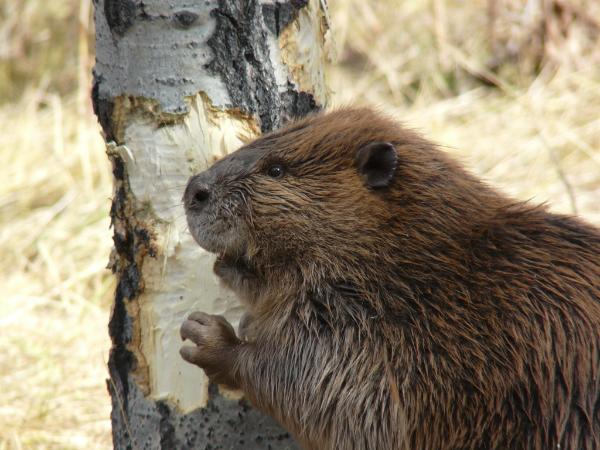 When wolves were restored to Yellowstone National Park, its riparian habitats bounced back. But it takes more than wolves killing elk to restore these habitats, a recent paper in the Proceedings of the Royal Society B: Biological Sciences says. Healthy riparian systems need beavers to create mudflats were willows can sprout and create the trademark stream-side habitats.
When wolves were restored to Yellowstone National Park, its riparian habitats bounced back. But it takes more than wolves killing elk to restore these habitats, a recent paper in the Proceedings of the Royal Society B: Biological Sciences says. Healthy riparian systems need beavers to create mudflats were willows can sprout and create the trademark stream-side habitats.
Of course, in the case of Yellowstone, the elk ate all the willows depriving the beavers of their favorite food, resulting in fewer beavers. The beavers can’t come back until the willows are big enough to eat. At the willows can’t come back until the beavers create some dams.
An article in ScienceNow calls it a chicken-and-egg problem. Certainly the study’s human-built fences and dams provide an option when the recovery area is small.
Read more in the Proceedings of the Royal Society B: Biological Sciences paper, here. (Fee or subscription required.)
Or read the ScienceNow article, here.
If you had any doubts that beaver dams add biodiversity to streams, a Freshwater Biology paper recently published online has more data for you. The study focused on a cold-water stream with native brook trout in Massachusetts. It found the dams altered the stream habitat four ways.
And if you are thinking that the beaver dams slowed the stream flow, allowing the water to warm making a habitat for warm-water species, you would be right. But the study found that it also improved conditions immediately for cold-loving native fish.
Read the paper in Freshwater Biology. (Fee or subscription required.)
Learn more about the stream in the paper, here.
Photo: Beaver in Colorado by Dennis Garrison, used courtesy of US Forest Service
